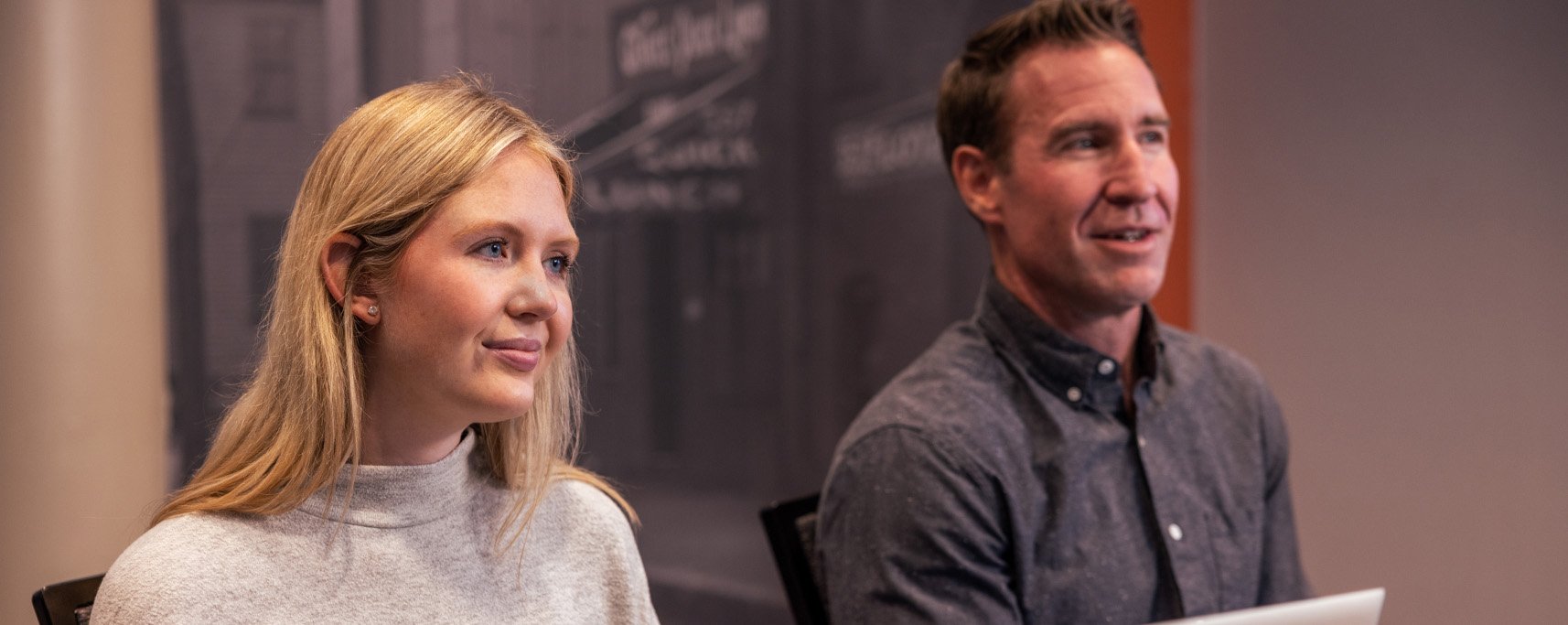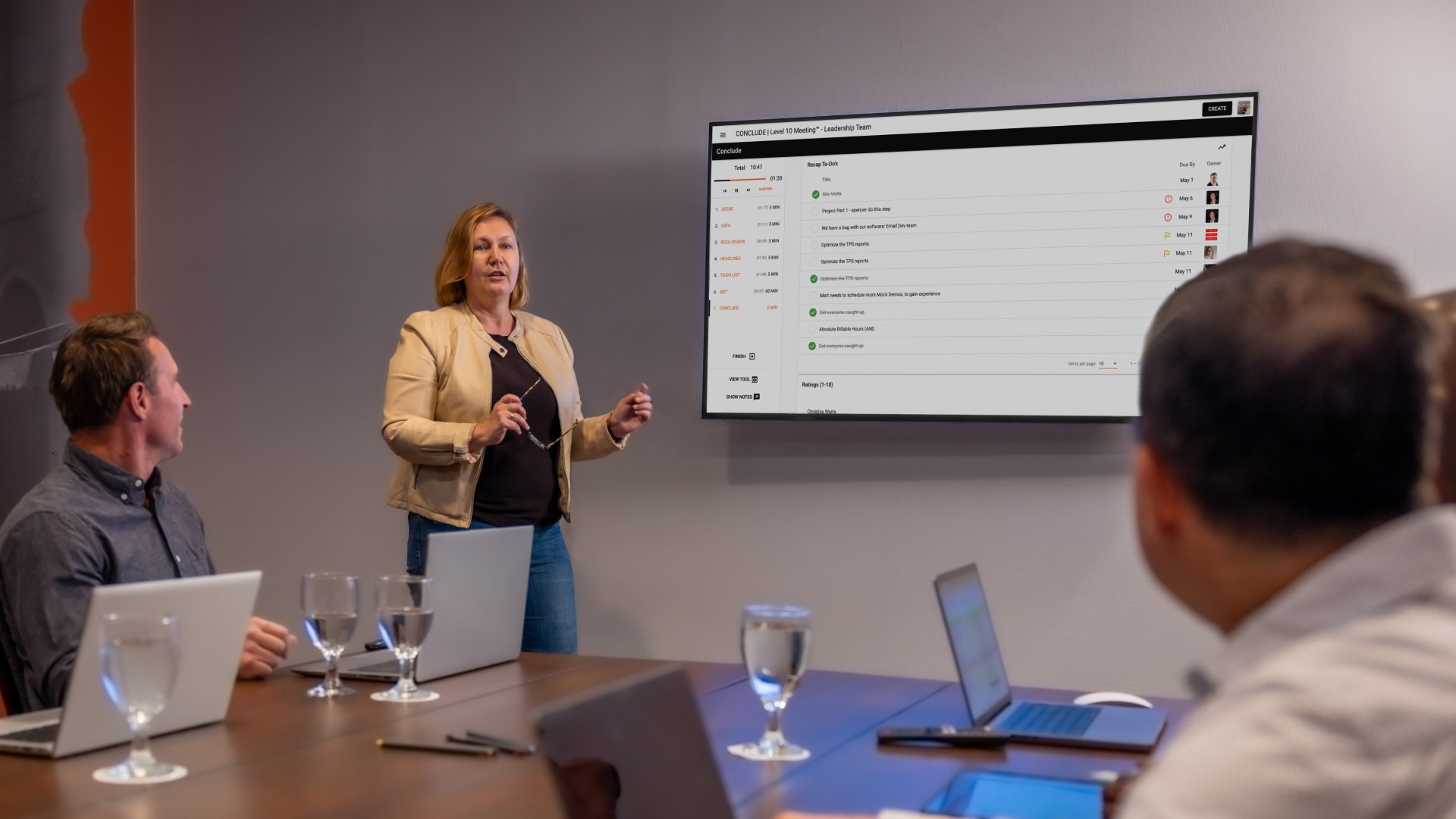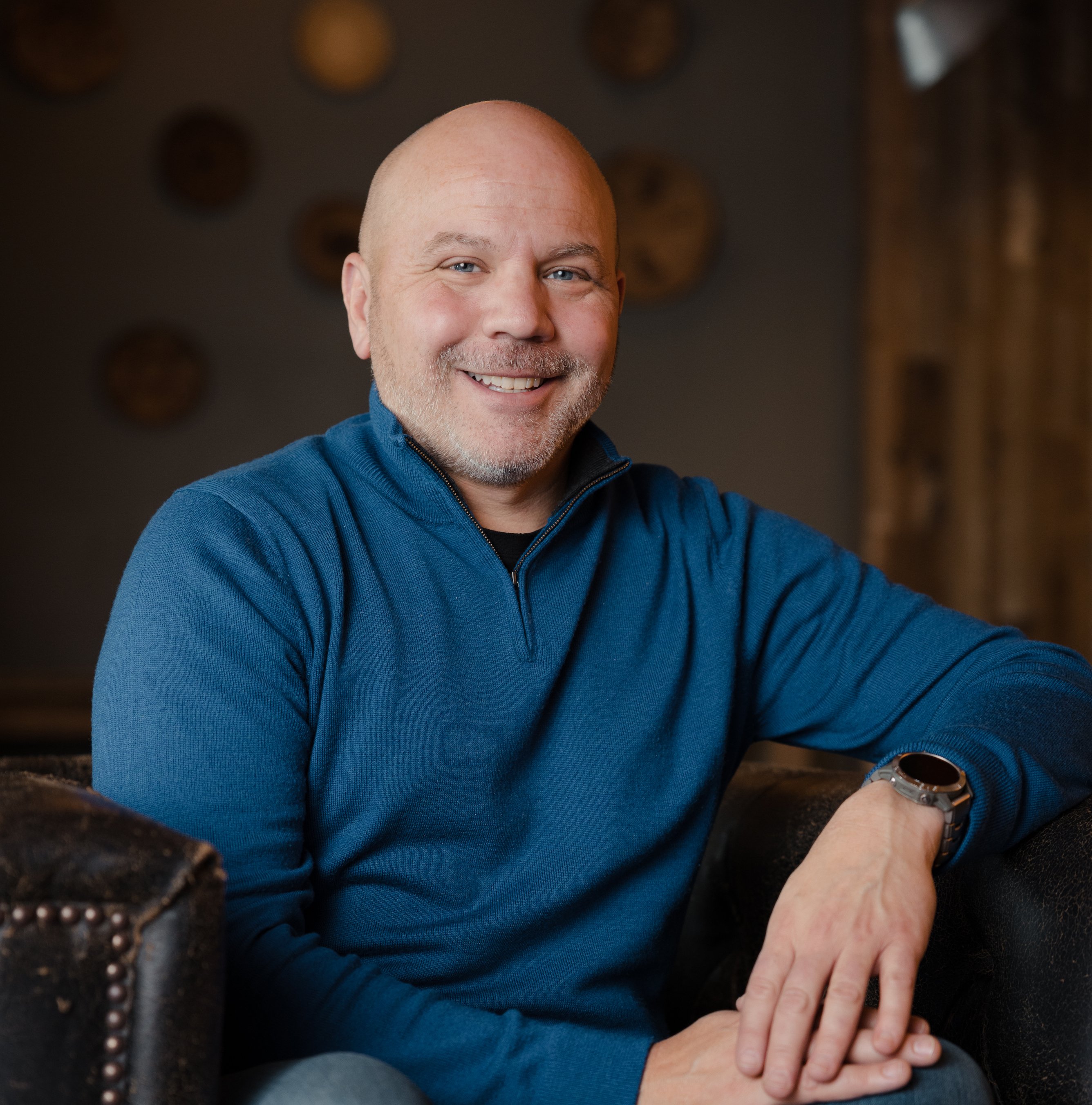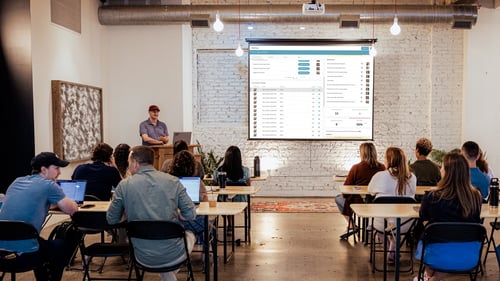Lead World-Class EOS® Level 10 Meetings™ Powered by Ninety
It seems everyone has something to say about meetings. Many say they’re unorganized, ineffective, and mostly a waste of time. Others say they lack clear decisions, there are too many, and they often don’t have the right people in the room to make things happen. However, ask the more than 50 clients I’ve coached who are Running On EOS™ Powered by Ninety, and they’ll tell you the Level 10 Meeting effectively changes their outcomes.
Professional EOS Implementers like me teach the weekly Level 10 Meeting as one of the twenty tools in the EOS Toolbox™. It’s a proven, world-class meeting format that’s currently being followed by tens of thousands of companies. Why? Because it keeps everything on track and on the same page, establishes accountability, and helps solve the most urgent and important issues. It’s a core driver for gaining traction.
This article will dive into the agenda for the Level 10 Meeting, highlighting the ways we use it to stay informed, engaged, and aligned. When you see the effectiveness of this meeting agenda for yourself – especially when automated in EOS Powered by Ninety – you’ll understand why it’s such a difference maker.
In a 90-Day World®, the Level 10 Meeting is a weekly tool that takes 90 minutes to:
- Transition the team to working “on” instead of “in” the business
- Create consistent reporting on what matters
- Review our prioritized commitments
- Establish weekly accountability
- Solve our most urgent challenges and opportunities
- Evaluate whether our meeting time was well-used
In fact, by rating the meeting at the end, we get to know the score — which is how the Level 10 Meeting earned its name.
Why Does EOS Call It a Level 10 Meeting?
As part of the EOS Proven Process, when we first meet with leadership teams, we ask them to rate the quality of their meetings on a scale of 1 to 10. The prevailing view is people haven’t found meetings nearly as helpful as the amount of time invested in them, with many rating their meeting effectiveness at a 4 on a 1–10 scale, with 10 being the best.
Obviously, that’s… not healthy or productive.
When Running on EOS, we’re aiming for a 10. We’re looking for honest assessments because we strive for improvement at any opportunity. So when our Level 10 Meeting is ending (during what we appropriately call “Conclude” on the agenda), we rate it on that 1–10 scale. However, a 10 is not about perfection — it's about performance.
So often, I hear from early clients statements like “Well, I’m a hard grader” or “I don’t give 10s because there’s always room for improvement.”
The reality is that the usefulness of the rating is to assess our performance and improve on a weekly basis. So when we rate, we ask:
- Did the Level 10 Meeting start and end on time?
- Did we follow our Level 10 Meeting agenda? (No tangents.)
- Are we on the same page?
- Did more than 90% of our To-Dos get to done?
- Did we solve the most important and urgent Issues?
With that context in hand, let’s now establish guiding principles and the agenda to see the power of the Level 10 Meeting. (Spoiler alert: Running a Level 10 Meeting in the Ninety software automates the structure and the flow — letting you work on the discipline of execution.)
“When we began implementing EOS, I learned we would be carving out 90 minutes each week to discuss our issues openly and honestly and thought, ‘This guy is crazy. Does he not understand we have a business to run?’ Four years later, we get anxious when one of us is not in attendance for our weekly L10s.”
— Chris Finnecy, Managing Partner (Integrator™), TrellisPoint
Key Points Guiding the EOS Level 10 Meeting Structure
It’s not easy, but it is simple. Here are 5 points to establishing a strong Meeting Pulse:
- We meet on the same day
- We meet at the same time
- We use the same agenda
- We start on time
- We end on time
By living these five principles, we’re creating a routine, something to build upon week after week. Truth is, the first few meetings aren’t always smooth; it takes some getting used to before you find a rhythm and buy-in to the discipline of how much time should be allocated to each agenda item. But once you’ve got a level of comfort with it, you’ll see the benefits in team health and communication. You’ll see how these meetings support Traction in a 90-Day World and you look forward to the weekly focus.
Why do I believe that EOS Powered by Ninety for Level 10 Meetings achieves more? Check out this short video to see for yourself:
The EOS Level 10 Meeting Agenda
Here, we’ll outline the Level 10 Meeting 90-minute agenda and the duration for each component, and then we’ll go through each section in greater detail:
- Segue (Good News): 5 minutes
- Scorecard: 5 minutes
- Rock Review: 5 minutes
- Customer/Employee Headlines: 5 minutes
- To-Do List: 5 minutes
- IDS® (Identify, Discuss, Solve): 60 minutes
- Conclude: 5 minutes
If you watched the video above, you noticed that having a Ninety software meeting manager removes the setting up and support aspects of running the meeting’s timing and flow. This is especially useful when you first begin the practice of the Level 10 Meeting. We recommend setting roles in the meeting: a facilitator who guides us through the process and a scribe or a person to capture the information and next steps in the software.
I’ve also found it very helpful to rotate these roles in the leadership team as they work on mastery before deploying this meeting framework to their departments. More on that later, but now, let’s go deeper on the agenda items.
Segue
This is a time to share updates that represent our personal and professional “good news” of the past week. By sharing the news, we’re connecting on a human level and increasing team health through shared stories.
I like to think of it as getting our empathy triggers active so we’re ready to be open, honest, and vulnerable as we begin the hard work of running a meeting worthy of a 10 rating.
Scorecard
This is an opportunity for teams to examine the 5–15 most important activity-based numbers related to their work at a high level. It’s a quick report out, just to make sure things are on track for the week.
Anything that doesn’t look right will be discussed in the Issues portion of the meeting, so don’t dwell on it or burn time discussing it here. We like to say, “Drop it down to the IDS section.” You’ll have plenty of time to discuss it then.
Rock Review
We’re looking at our 90-day priorities here and simply signaling whether they are on or off track. Like the Scorecard review, this is just a quick thumbs up or down on the status of your Rocks. If it’s off track (or someone wants to discuss the status in greater detail), you guessed it, we’re saving that discussion for the IDS segment.
Headlines
Any updates (good or bad) related to customers, employees, or both? This is the time to share them. These are 1–2 sentences that could be about good news received from an Ideal Customer, an announcement about organizational new hires, or simply letting people know about vacation plans. However, if it takes more than 1 to 2 sentences to explain, then “drop it down” to the IDS section.
To-Do List
This is a list of those seven-day action items people have committed to doing, and this is where the facilitator leads us through the review of all the To-Dos from the prior week’s meeting.
Here, it’s all about accountability and accomplishing more as a team. We review each item on the To-Do list, note that it’s “done” or “not done.” If it’s done, we check the box (yes, that’s another Ninety reference). If it’s not, we either leave it on the list and get a commitment to get it done by next week or “drop it down” to the IDS section. Rule of thumb: 90% of To-Dos should be “done” every week.
IDS (Identify, Discuss, Solve)
This is the moment we have been waiting for. It’s the meatiest part of a Level 10 Meeting. We’ve collected all the items we “dropped down” earlier, plus any we had from previous weeks and any new ones we added since. Now is the time for working to solve them.
Start by reviewing the list of Issues and asking if anyone has new Issues to add. Then, if it’s a long list, I like to take a pass-through and get the team to keep, kill, combine, or move items.
- “Keep” means it’s still relevant for us to work on
- “Kill” means it’s no longer relevant
- “Combine” happens when two items are similar and we don’t need both
- “Move” happens if an issue in the leadership team can be moved to a department meeting
After we have our list, we select the top 3 that need to be resolved this week. Don’t overthink it. The facilitator should guide you to a starting point. Now, it’s time to Identify, Discuss, and Solve these issues.
- Identify is simply getting to the core issue and not the symptom of the challenge/opportunity.
- Discuss is a chance for the team to give input. I find that sticking to the facts and experience removes the conjecture and politicking.
- Once we have the perspective from the team, it's time to Solve. The issue has an owner, and after some intense collaborative work, the solution should become apparent. It often results in a To-Do assigned to a team member who will take action on the decided solution.
Coach’s Note: Often, people show up to the Level 10 Meeting without preparation. The discipline is to populate all items ahead of time, such as the Scorecard and even Issues. Great leaders do the work. They come prepared to use your meeting time wisely. Ninety’s software helps here because it allows you to do the work from wherever you are, so you can add items and review whenever and wherever you want. It’s one more way we take the world-class tools of EOS and increase the performance and outcome for teams.
Conclude
So, how did we do? This is the time to rate the meeting and ensure it’s been effective, productive, and worth everyone’s time. As noted earlier, we’re aiming for 10s here. Sure, a 9 or an 8 is fine, though it’s nice to have a little context added for where or how we fell a bit short. But if someone offers a rating below 8, we really want to understand the reason and see how we can do better the next time around.
That’s why we allocate a few minutes to this section. Giving the rating takes seconds. But in the event a low rating is offered, we definitely want time to learn how to perform better next week.

The Impact of EOS Level 10 Meetings on a 90-Day World
After running a handful of Level 10 Meetings, you truly get a feel for how the work you do supports larger goals and the overall vision. Describing the impact of these meetings is probably best done by Gino Wickman and Mark Winters, co-authors of Rocket Fuel:
“By setting 90-Day Priorities and implementing the Weekly Level 10 Meeting, you create both a 90-Day World and a weekly focus. You keep the circles connected between the Visionary, the Integrator, and the Leadership Team. You gain tremendous traction toward your vision. You are now doing what the successful V/I duos do. Your past frustrations start to subside, and you make progress on your way to helping your company and relationship evolve from chaotic to a well-oiled machine.”
When to Start the Implementation of EOS Level 10 Meetings
Of the hundreds of companies I have interacted with running on EOS and powered by Ninety, no one has ever said, “I wish I would have waited longer.” Most of the time, they say, “I waited too long.”
So start today! Read Traction or What the Heck is EOS?, sign up for EOS Base Camp if you're a self-implementer, and start a free trial at Ninety.
Once you get started and are curious to learn more, then sign up for a 90-Minute Meeting with a Professional EOS Implementer®. You will leave that meeting with clarity about your next steps in implementing EOS.
Why EOS Level 10 Meetings Powered by Ninety?
Concepts, tools, and disciplines are the basis for operation systems like EOS. They have been working for decades on paper, spreadsheets, and non-connected technologies.
We describe our partnership as “Powered by Ninety” because our software removes the friction of the intersection of the work. The tools are seamlessly connected, data moves with a click, and communication cascades from team to team.
Join the thousands of companies running Level 10 Meetings on Ninety and take up the challenge of running the most productive meetings you’ve ever experienced. Our helpful team can get you up and running on Ninety in less than 30 minutes. Start your 30-day free trial today.





